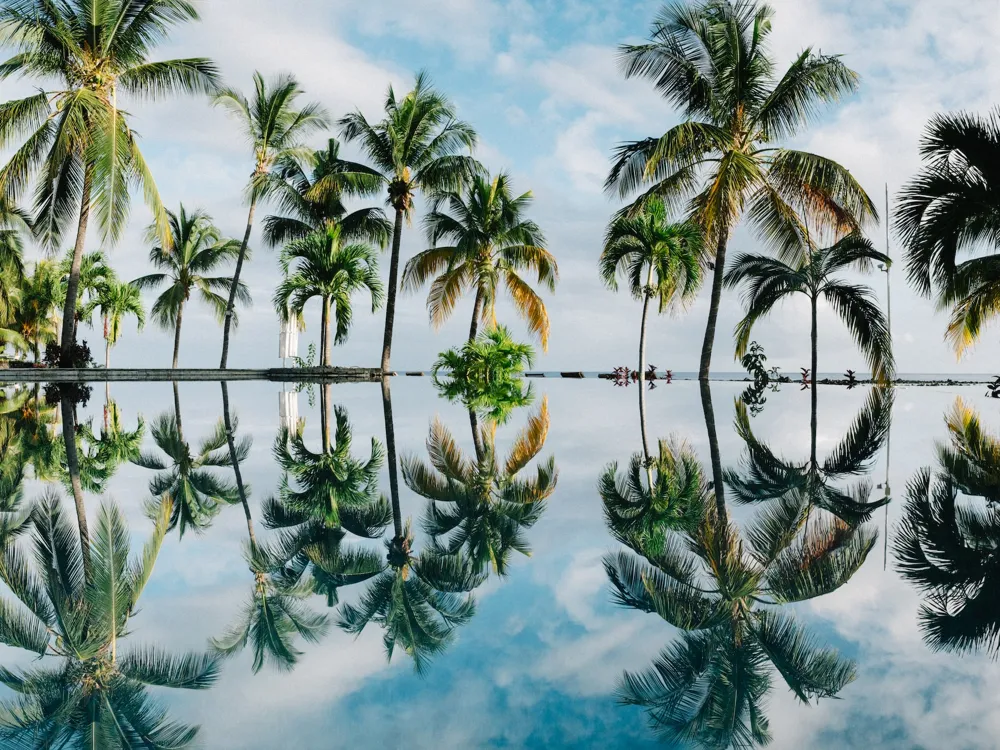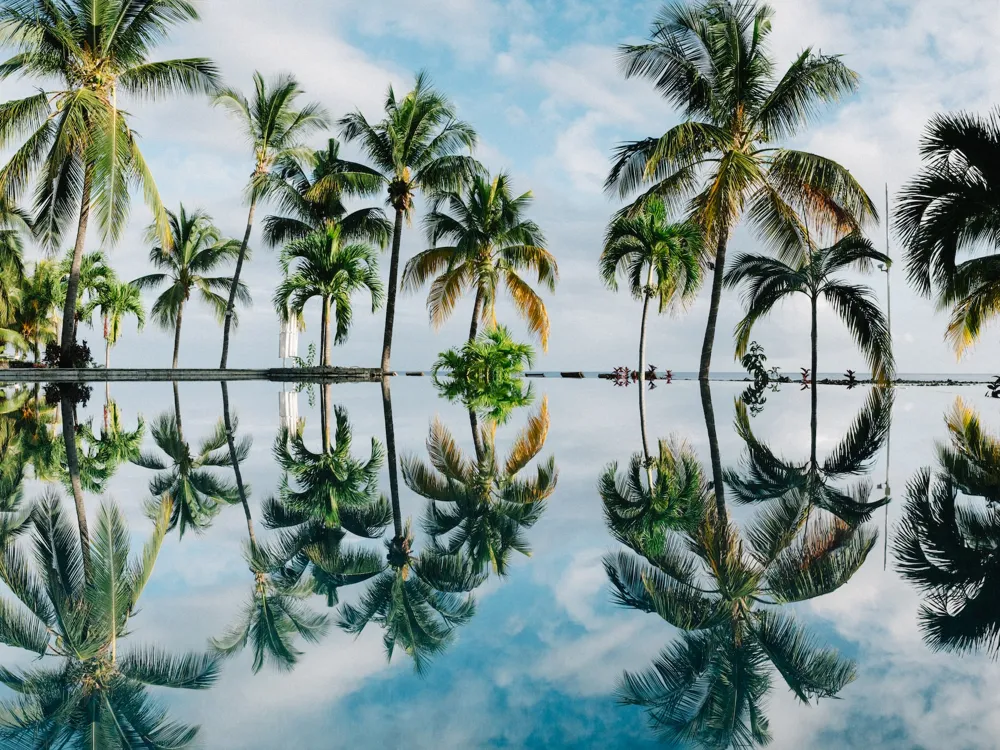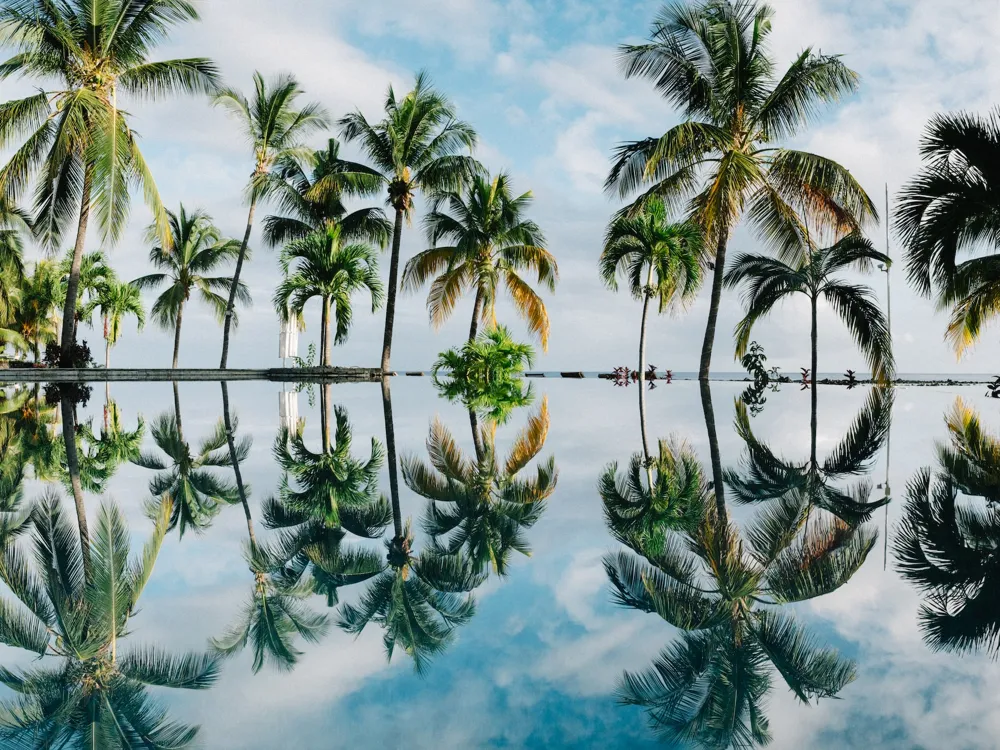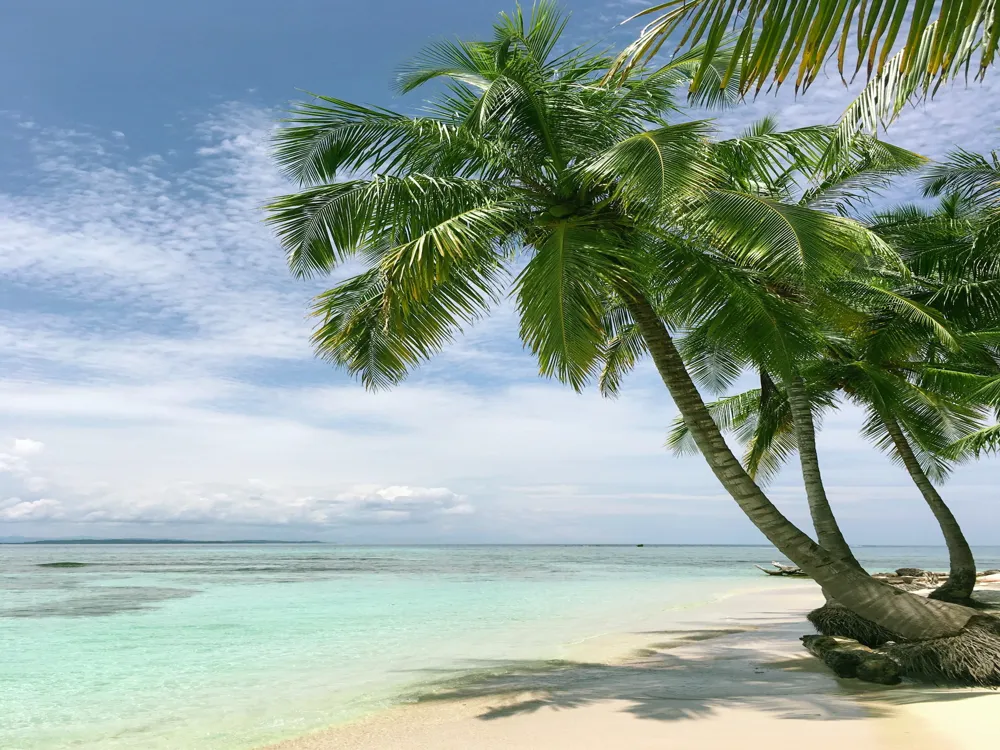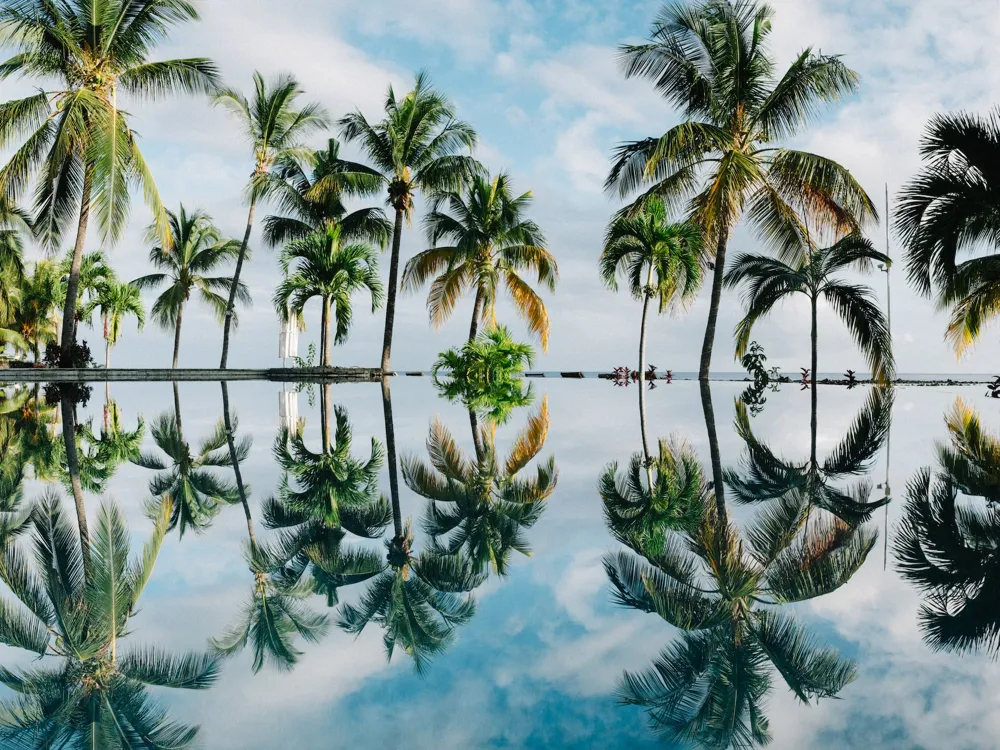The Seven Coloured Earth of Chamarel, a natural wonder located in Mauritius, is a unique geological formation and a spectacular tourist attraction. This rare natural phenomenon is known for its vivid and distinct seven colors - red, brown, violet, green, blue, purple, and yellow. The different hues are believed to be the result of the cooling of volcanic rocks at different temperatures, combined with the tropical climate of Mauritius. These dunes, spanning over a relatively small area of about 7500 square meters, offer a breathtaking landscape. The colors are particularly striking at sunrise when the soft morning light enhances their vibrancy. Interestingly, despite torrential downpours common to the region, the dunes never erode, and the colors, surprisingly, do not wash away. The phenomenon is also characterized by the curious fact that the sands settle in distinct layers, refusing to mix, adding to the allure of this geological wonder. The history of the Seven Coloured Earth dates back millions of years, to the volcanic origins of Mauritius. The island itself was formed as a result of underwater volcanic eruptions. Over time, the basaltic lava cooled down, and mineral-rich geothermal springs transformed these rocks into clay minerals, creating the different colored sands. This process, combined with the island's unique climate and topography, resulted in the formation of the Seven Coloured Earth. The beauty of the Seven Coloured Earth extends beyond its visual appeal. It represents a valuable piece of Mauritius' natural heritage and is a testament to the island's volcanic past. This geological formation has become an emblem of Mauritius, encapsulating the island's rich natural history and its status as a hotspot of biodiversity and geological diversity. Moreover, the Seven Coloured Earth is surrounded by lush greenery and is located near the Chamarel Waterfall, another natural marvel of Mauritius. This proximity to other natural attractions makes it an ideal destination for nature enthusiasts and those seeking to explore the unique landscapes of Mauritius. The Seven Coloured Earth of Chamarel, while a natural formation, has been enhanced by thoughtful architectural design to allow visitors to fully appreciate its beauty while preserving its integrity. The architectural elements in and around the site are designed to be environmentally friendly, blending seamlessly with the natural surroundings. The main feature is the viewing platform, which offers panoramic views of the sand dunes. This platform is strategically positioned to provide the best vantage point for observing the colors of the sands. The design is minimalist, using natural materials such as wood and stone to maintain harmony with the environment. This approach not only enhances the visitor experience but also minimizes the ecological footprint of the structure. Pathways leading to the viewing platform are carefully laid out to protect the delicate sand formations. These paths are often bordered by wooden railings and native plants, guiding visitors while preserving the natural landscape. The walkways are designed to be accessible, ensuring that visitors of all abilities can enjoy the site. Information boards and interactive displays are strategically placed along these pathways, offering educational insights into the geology, history, and ecological significance of the Seven Coloured Earth. The use of technology is subtle and focused on enhancing the learning experience without detracting from the natural beauty of the site. The architectural design extends to the visitor center, which houses amenities such as a gift shop, restrooms, and a café. The center is constructed with sustainability in mind, using local materials and incorporating green technologies such as solar panels and water recycling systems. The building's design reflects the cultural heritage of Mauritius, with elements inspired by traditional Mauritian architecture. In summary, the architecture of the Seven Coloured Earth of Chamarel is a blend of functionality, environmental sustainability, and aesthetic appeal. It enhances the visitor experience while preserving the site's natural beauty and ecological integrity. The best time to visit the Seven Coloured Earth is early in the morning or late in the afternoon. During these times, the sunlight brings out the vibrant colors of the sands, making for a spectacular view. Additionally, visiting outside of peak hours helps avoid crowds. Comfortable walking shoes are a must, as you will be walking on uneven paths. Also, consider the tropical climate of Mauritius and wear light, breathable clothing. Don't forget a hat and sunglasses for sun protection. For photography enthusiasts, a polarizing filter can help enhance the colors of the sands. Early morning or late afternoon light provides the best natural lighting for photographs. Remember to respect the site and avoid stepping on the sands to preserve their natural state. The site is accessible to visitors with mobility issues. The pathways and viewing platform are designed to accommodate wheelchairs, ensuring that everyone can enjoy this natural wonder. It is crucial to respect the ecological significance of the site. Do not take sand from the dunes, stay on designated paths, and dispose of trash responsibly to help preserve this natural wonder for future generations. The Seven Coloured Earth of Chamarel is located in the southwestern part of Mauritius and is accessible by various modes of transportation. The most common way to reach the site is by car. It is approximately a 45-minute drive from the capital city of Port Louis and can be easily reached via the M2 and B104 roads. Taxis and rental cars are readily available for tourists. For those preferring public transportation, buses run regularly from major cities to Chamarel. However, keep in mind that public buses may not take you directly to the site, and a short walk or taxi ride might be necessary from the nearest bus stop. Guided tours are another popular option, offering the convenience of transportation and the added benefit of a knowledgeable guide. Many tour operators in Mauritius offer trips to the Seven Coloured Earth as part of a larger itinerary, which often includes other nearby attractions such as the Chamarel Waterfall. For the adventurous, renting a bike or a scooter can be an exciting way to explore the scenic route to Chamarel. This mode of transport allows for greater flexibility and the opportunity to enjoy the stunning landscapes of Mauritius at your own pace. Read More:Overview of the Seven Coloured Earth of Chamarel, Mauritius
Architecture of Seven Coloured Earth of Chamarel
Tips When Visiting Seven Coloured Earth of Chamarel
Best Time to Visit
What to Wear
Photography Tips
Accessibility
Respect the Environment
How To Reach Seven Coloured Earth of Chamarel
Seven Coloured Earth of Chamarel
Chamarel
Mauritius
₹ 24,899 onwards
View mauritius Packages
Weather :
Tags : Rocks & Canyons
Timings : 8:30 AM - 5:30 PM
Time Required : 1 hour
Entry Fee : INR 1500
Planning a Trip? Ask Your Question
Mauritius Travel Packages
View All Packages For Mauritius
Top Hotel Collections for Mauritius

Private Pool

Luxury Hotels

5-Star Hotels

Pet Friendly
Top Hotels Near Mauritius
Other Top Ranking Places In Mauritius
View All Places To Visit In mauritius
View mauritius Packages
Weather :
Tags : Rocks & Canyons
Timings : 8:30 AM - 5:30 PM
Time Required : 1 hour
Entry Fee : INR 1500
Planning a Trip? Ask Your Question
Mauritius Travel Packages
View All Packages For Mauritius
Top Hotel Collections for Mauritius

Private Pool

Luxury Hotels

5-Star Hotels

Pet Friendly







